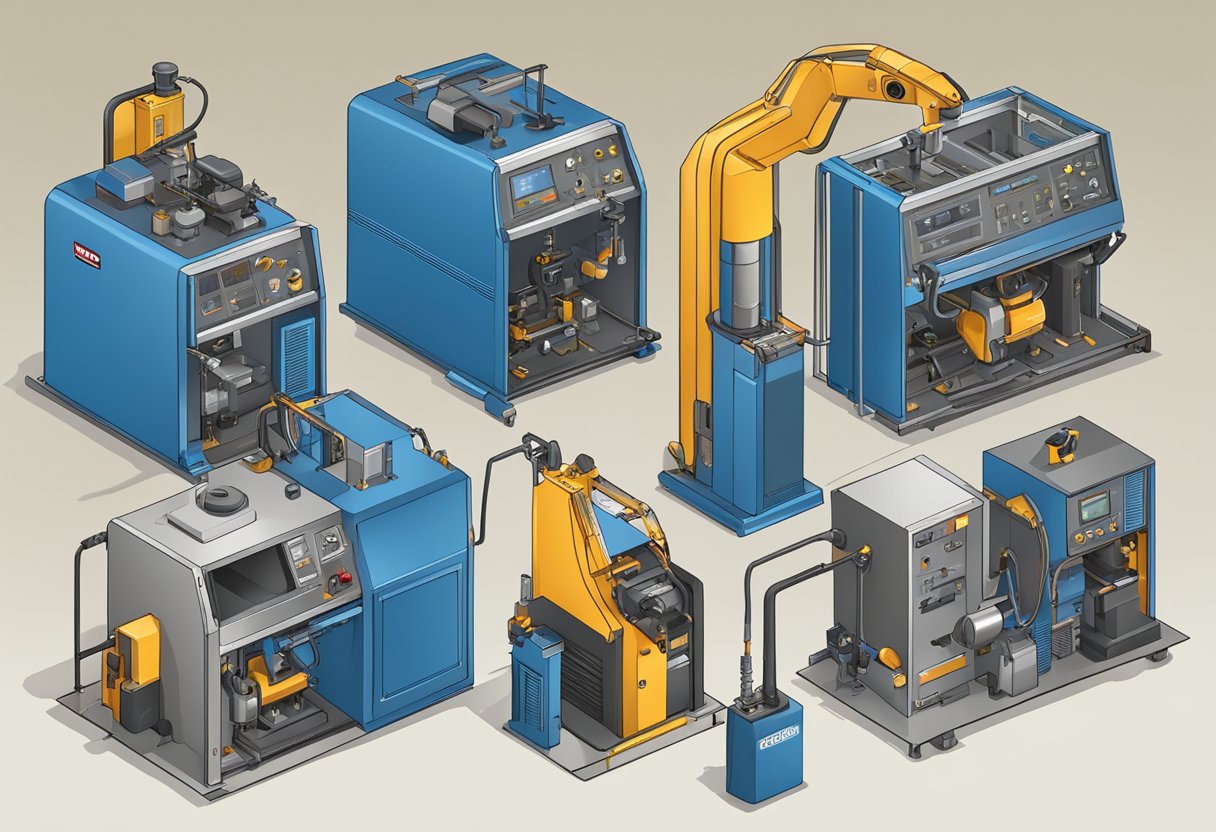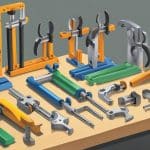Types Of Welders
Welding is a process that involves joining two or more metal pieces together using heat and pressure. It is a crucial process in many industries, including manufacturing, construction, and automotive. Welding requires specialized equipment and techniques, and there are several types of welders available in the market.
Understanding the fundamentals of welding is essential in choosing the right equipment and technique for a specific job. Welding processes can be broadly classified into four categories: MIG, TIG, flux-cored arc, and stick. Each of these processes has its advantages and disadvantages, and they are suitable for different welding jobs. Factors such as the metals they can work on, the amount of current and heat they produce, and the duty cycle of each machine determine their suitability for a particular job.
Choosing the right welder is crucial to ensure a high-quality weld. Welders are available in different sizes, shapes, and price ranges, and selecting the right one can be overwhelming. Factors such as the type of metal to be welded, the thickness of the metal, and the welding environment must be considered when choosing a welder.
Key Takeaways
- Understanding the fundamentals of welding is crucial in choosing the right equipment and technique for a specific job.
- Welding processes can be broadly classified into four categories: MIG, TIG, flux-cored arc, and stick.
- Choosing the right welder is crucial to ensure a high-quality weld.
Understanding Welding Fundamentals

Welding is a process of joining two or more pieces of metal by melting and fusing them together. This process is widely used in various industries, including construction, automotive, and manufacturing. The following subsections will discuss the welding methods and applications, as well as the materials and filler metals used in welding.
Welding Methods and Applications
There are several welding methods, including arc welding, TIG welding, MIG welding, flux-cored arc welding, shielded metal arc welding, gas welding, and plasma arc welding. Each method has its unique advantages and disadvantages, making it suitable for specific applications.
Arc welding is a welding method that uses an electric arc between an electrode and the base material to melt the metals. TIG welding uses a tungsten electrode to create the arc, while MIG welding uses a wire electrode. Flux-cored arc welding uses a flux-covered electrode, while shielded metal arc welding uses a coated electrode. Gas welding uses a flame to melt the metals, while plasma arc welding uses a plasma arc.
Materials and Filler Metals
The materials and filler metals used in welding depend on the type of metal being welded. Steel, aluminum, copper, stainless steel, titanium, aluminum alloys, and copper alloys are commonly welded metals. The thickness of the metal also plays a role in determining the welding method and filler metal used.
Filler metals are used to fill the gaps between the metals being welded. They are available in various forms, including rods, wires, and powders. The filler metal used depends on the type of metal being welded and the welding method used.
In conclusion, understanding the fundamentals of welding is essential for anyone interested in pursuing a career in welding. The welding method and materials used depend on the type of metal being welded and the application. By selecting the appropriate welding method and filler metal, one can achieve a strong and durable weld.
Types of Welders and Their Uses
When it comes to welding, there are several different types of welders available, each with their own unique features and benefits. In this section, we’ll take a closer look at the most common types of welders and their uses.
MIG Welders
MIG welding, or Gas Metal Arc Welding (GMAW), is a type of welding that uses a consumable wire electrode and a shielding gas to create a strong, durable bond between two metal pieces. MIG welders are popular among DIY enthusiasts and professionals alike because they are easy to use and produce high-quality welds.
MIG welders are ideal for welding thin metal sheets, making them a great choice for automotive repairs, metal fabrication, and other similar projects. They can also be used for welding stainless steel, aluminum, and other metals.
TIG Welders
TIG welding, or Gas Tungsten Arc Welding (GTAW), is a type of welding that uses a non-consumable tungsten electrode and a shielding gas to create a strong, precise weld. TIG welders are known for their precision and control, making them a popular choice for welding delicate or intricate parts.
TIG welders are ideal for welding aluminum, stainless steel, and other metals that require a high level of precision. They are also commonly used for welding pipes and tubes, as well as for welding in the aerospace and automotive industries.
Stick Welders
Stick welding, or Shielded Metal Arc Welding (SMAW), is a type of welding that uses a consumable electrode and a flux coating to create a strong, durable weld. Stick welders are popular among DIY enthusiasts and professionals alike because they are versatile and can be used in a variety of different settings.
Stick welders are ideal for welding thick metal pieces that require a strong, durable bond. They can also be used for welding cast iron, steel, and other metals.
Flux-Cored Arc Welders
Flux-Cored Arc Welding (FCAW) is a type of welding that uses a consumable electrode and a flux core to create a strong, durable weld. Flux-cored arc welders are popular among DIY enthusiasts and professionals alike because they are versatile and can be used in a variety of different settings.
Flux-cored arc welders are ideal for welding thick metal pieces that require a strong, durable bond. They can also be used for welding stainless steel, aluminum, and other metals.
In conclusion, choosing the right type of welder depends on the type of metal you are working with, the thickness of the metal, and the type of project you are working on. By understanding the different types of welders available and their uses, you can make an informed decision when it comes to selecting the right welding machine and equipment for your needs.
Advanced Welding Technologies
Advanced welding technologies are becoming increasingly popular as they allow for precision and high-quality welds. These technologies include laser and electron beam welding, as well as automated and robotic welding.
Laser and Electron Beam Welding
Laser welding and electron beam welding are both energy beam welding processes that use a concentrated beam of energy to melt and fuse materials. Laser welding uses a laser beam to heat and melt the surface of the material, while electron beam welding uses a beam of high-velocity electrons.
These processes are ideal for welding materials that are difficult to weld using traditional welding methods. They are also capable of producing high-quality welds with minimal distortion and heat-affected zones.
Automated and Robotic Welding
Automated and robotic welding are also becoming increasingly popular in the welding industry. These processes use machines to perform welding tasks, which can increase efficiency and reduce the risk of human error.
Robotic welding involves the use of robots to perform welding tasks. These robots can be programmed to perform precise welding tasks with minimal human intervention. Automated welding, on the other hand, uses machines to perform welding tasks without the need for human intervention.
Both of these processes can increase productivity and reduce labor costs. They are also capable of producing high-quality welds with consistent results.
Overall, advanced welding technologies such as laser and electron beam welding, as well as automated and robotic welding, offer a range of benefits for the welding industry. These processes allow for precision and high-quality welds, while also increasing efficiency and reducing labor costs.
Welding in Different Industries
Welding is an essential process in various industries, including manufacturing, construction, aerospace, shipbuilding, and fabrication. Skilled welders are in high demand in these industries, and their expertise is crucial to ensure the quality and safety of the products.
Construction and Infrastructure
In the construction and infrastructure industries, welding is used to join large metal structures, such as bridges, buildings, and pipelines. Welding is also used to repair and maintain the structures. The most commonly used welding techniques in this industry are MIG welding and stick welding.
Automotive and Aerospace
In the automotive and aerospace industries, welding is used to join metal parts in the manufacturing process. Welding is also used to repair and maintain the vehicles and aircraft. The most commonly used welding techniques in this industry are TIG welding and laser welding.
Shipbuilding and Marine
In the shipbuilding and marine industries, welding is used to join metal parts in the construction of ships, boats, and offshore structures. Welding is also used to repair and maintain the vessels. The most commonly used welding techniques in this industry are MIG welding and stick welding.
In conclusion, welding is a vital process in various industries, and skilled welders are in high demand. The choice of welding technique depends on the application and the material being welded. Therefore, it is essential to have a thorough understanding of the different welding techniques and their applications to ensure the quality and safety of the products.
Choosing the Right Welder
When choosing the right welder, there are several factors to consider. These include cost, performance, portability, and versatility.
Cost and Performance Considerations
The cost of a welder can vary greatly depending on the type of welder and its capabilities. It is important to consider the intended use of the welder and the budget available. A higher-priced welder may offer better performance, but it may not be necessary for all applications.
The best welder for a particular job will depend on the materials being welded, the thickness of the materials, and the desired deposition rate. A welder with a higher duty cycle will be able to work for longer periods without overheating, making it a better choice for heavy-duty use.
Portability and Versatility
Portability is another important consideration when choosing a welder. A portable welder can be easily moved from one job site to another, making it a good choice for contractors and those who need to work in different locations.
Versatility is also important, as it allows the welder to be used for a variety of applications. A welder that can be used for both MIG and TIG welding, for example, will be more versatile than one that can only be used for one type of welding.
When choosing a welder, it is important to consider the welding gun as well. The gun should be comfortable to hold and easy to maneuver, allowing the welder to work for longer periods without fatigue.
Overall, choosing the right welder will depend on a variety of factors, including cost, performance, portability, and versatility. By considering these factors, it is possible to find a welder that meets the needs of the job at hand.






